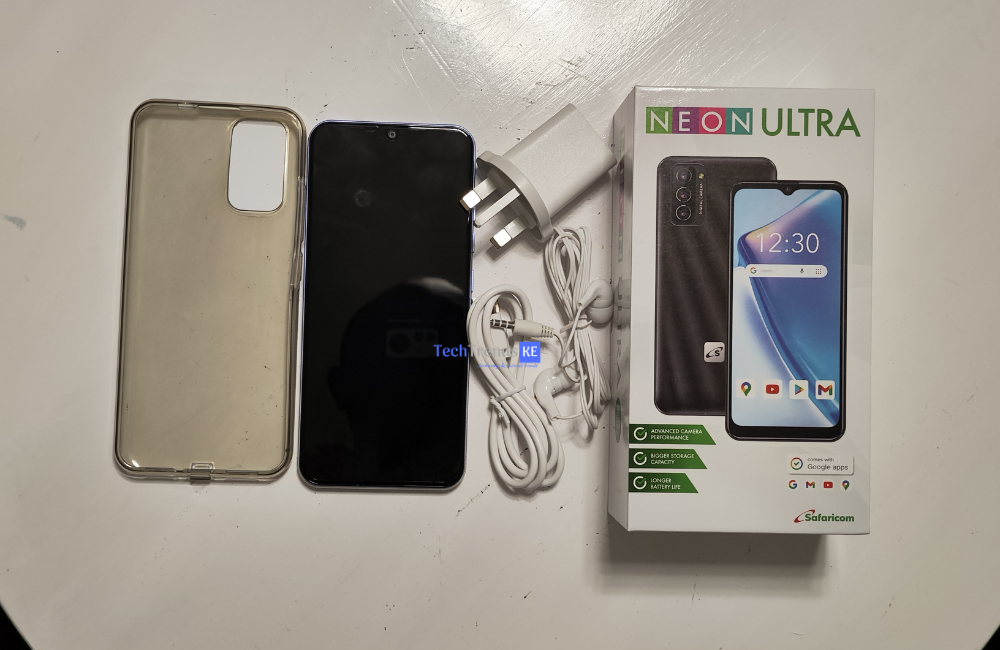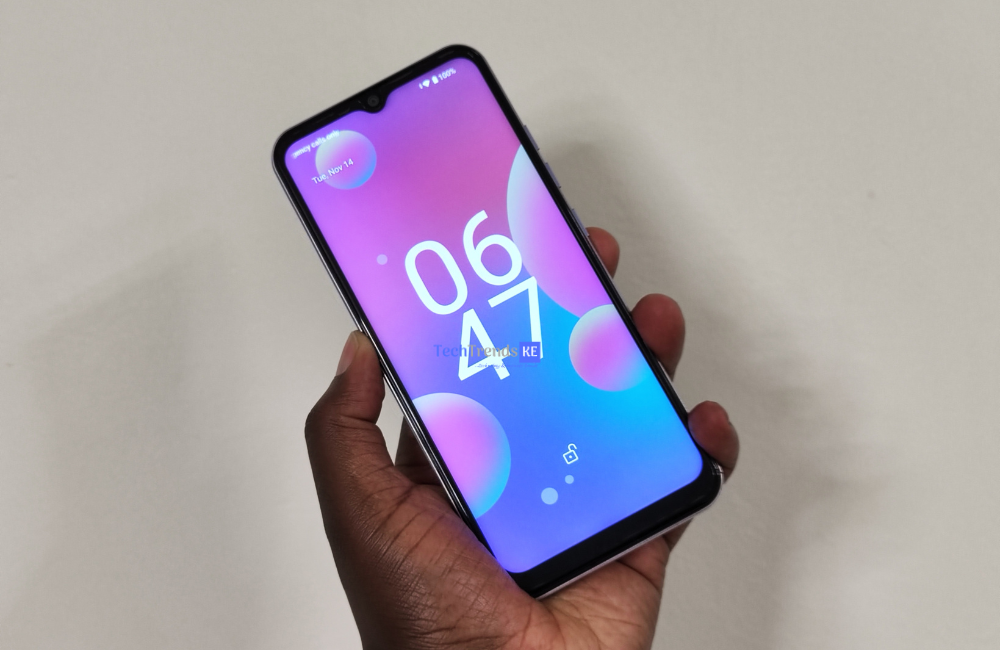
Neon Ultra Review: The Kenyan-assembled smartphones were finally unveiled a couple of weeks ago. The devices feature the Neon branding that has become synonymous with Safaricom under its Maisha Ni Digital Campaign.
The first time we heard of these devices was back in 2017-2018. Remember the Neon Kicka and the Kicka 4?
Well, these devices will now be assembled locally; thanks to a joint venture between Safaricom, Jamii Telecommunications and Chinese firm Shenzhen TeleOne Technology.
The first devices to come out of the local assembly plant are the Neon Ray Ultra and the Neon Smarta. You’ve probably seen the devices already selling locally, this is because some units had already been released to the market.
The devices are available countrywide at Faiba shops and dealer stores as well as Safaricom shops and Masoko online platform will retail from KES. 8,900..
We got our hands on the Neon Ray Ultra, which is a slight upgrade from the Neon Smarta.
What’s in the box?

- Neon Ray Ultra itself
- a charger
- USB-C cable
- A pair of headphones
- A quick start guide
- A warranty card and
- A protective case.
The Neon Ray Ultra is not really for people looking for a high-end or midrange experience, it’s for people trying to move from a feature phone and is probably trying to get their hands on their first smartphones, this explains the specs that come with it.
Neon Ray Ultra Specs

The phone comes with a 6’5 inches 60Hz IPS LCD display with a resolution of 480p. The display doesn’t offer much which of course includes the colours but again, this is what you get for a phone at that price. When you watch videos from the device you will also experience some lags at the start but becomes better as you go along. Colour output as I said might not be the best but the viewing angles are quite good.
Of course, if you’re looking for a phone with a better display you will have to pay more but if you’re on a budget, the Neon Ray Ultra is a good option.
When it comes to the design, the phone mimics some of the budget phones we have seen around that price range. The body is made of plastic, very light and easy to hold in the hands.
At the top, you have the headphone jack, while the bottom houses a Type-C port, and the speaker grill. The left side is empty, all the volume and power buttons are on the right. At the back, you have the dual camera module with a flash which has taken a small chunk of the smartphone’s top rear panel. At the front, you have the teardrop notch housing the selfie camera, and some very thin bezels – of course not the thinnest we have seen. Overall, the phone feels well-built despite being plastic.
For you to insert a SIM card you will have to remove the back cover. The battery is also removable.

Powering the Neon Ray Ultra is a unisoc chipset. Well, that is a budget chipset that we have seen being used in most budget phones but it’s still capable of handling light tasks. What this means is that you can easily scroll through your socials, browse the internet, and play some light games without experiencing any lags.
We are also getting 2GB of RAM and 32GB of onboard storage. The storage might be very low for so many people but the good thing is there is an option to increase that thanks to the addition of a microSD Card.
The phone runs on Android 13 Go edition. Android Go is a stripped-down version of Android designed to run on entry-level smartphones with 2GB or less. This version of Android is fine-tuned for devices with specific hardware configurations and the Neon Ray Ultra fits in well here.
The US is quite clean as well with no bloatware. In fact, Facebook Lite is the only third-party app that comes pre-installed. The rest is the usual Google apps as well as a shortcut (progressive web app) of Safaricom.com and MySafaricom app.
The device’s camera is good enough for an ultra-entry-level experience and nothing more with several different modes to play around with. The dual camera at the back is 8MP and 2MP while the selfie camera is 5MP.
For the battery, we’re getting a 3750 mAh non-removable battery which should be able to be able to last you an entire day on a single charge on moderate use. There is also a USB-C ( charging only).
What we like
- The big display
- The addition of USB-C. Remember the EU passed a law on universal charging ports for smartphones by 2024 last year? It makes me happy to see it on budget phones like the Neon.
- 4G Connectivity
What could have been better
- Storage: 32GB is just too low
- Performance: I know there’s not much to expect from a phone at this price point but the phone feels sluggish at some point when using it.
- Price: KES. 8,900 is quite a stretch considering the people this phone is targeting. The price includes Government subsidies and tax concessions but still, I think it should be lower.
Conclusion

Here is the thing, Safaricom has its target market figured out with this device. Those still stuck in the feature phone segment but looking to get their first smartphone experience.
Safaricom has partnered with Jamii Telecom to scale up 4G penetration on the network to over 20 million devices in the next two years, drive connectivity and mobile data use as well and support the government’s digitalization agenda. The telco wants to use devices like the Neon Ultra to achieve this and assembling them locally means they will also be available at affordable prices.
The device is available for KES. 8,900, a price that if revised, most of them will be willing to part with and get their hands on the Neon Ray Ultra. In return, they are getting faster access to 4G connectivity, mobile internet, stable live streams, and more stable, clearer video calls, thanks to VoLTE.
The phone delivers faster performance compared to previous Neon devices we have seen in the market.
The device can be purchased from Safaricom shops nationwide as well as Masoko.
Follow us on Telegram, Twitter, and Facebook, or subscribe to our weekly newsletter to ensure you don’t miss out on any future updates. Send tips to editor@techtrendske.co.ke






